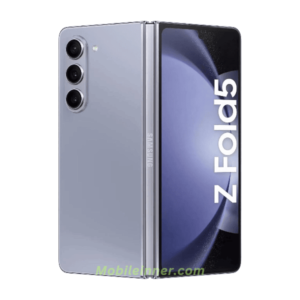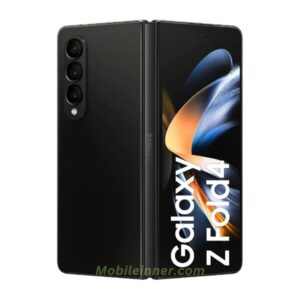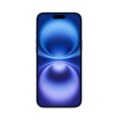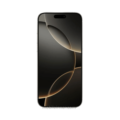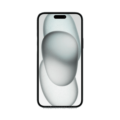- Home
- All Phones
- Compare
- Samsung Galaxy Z Fold5 vs Z Fold4
Samsung Galaxy Z Fold5 vs Z Fold4
Samsung recently made public the much-anticipated Galaxy Z Fold5, the next edition of the premium foldable smartphone series they have been developing. Samsung continues to hone and perfect the foldable experience with each successive device version. But in what specific ways does the brand-new Z Fold5 differ from its predecessor, the Z Fold4? We compare the most essential specifications side by side to highlight any differences.
Z Fold5 vs Z Fold4 Display – Same Size of the Cover Screen
- The Z Fold5 has a cover screen of 6.2 inches and a foldable display measuring 7.6 inches with FHD resolution. Displayed as 2X
- Z Fold4 Cover screen measures 6.2 inches and is HD, while the foldable display measures 7.6 inches and is FHD. Displayed as 2
The inside foldable displays have remained the same from their previous size of 7.6 inches. However, Samsung increased the size of the Z Fold5’s exterior cover screen to 6.2 inches to be used more efficiently with one hand. Both models support adaptive refresh rates of up to 120 Hz.
Design: Hinge that is Slenderer
- Z Fold5: When folded, it measures 154.9 x 67.1 x 13.4 mm; when unfolded, it measures 154.9 x 129.9 x 6.1 mm
- Z Fold4: When folded, it measures 155.1 x 67.1 x 14.2-15.8 mm; when unfolded, it measures 155.1 x 130.1 x 6.3 mm
The Z Fold5 maintains the same footprint as its predecessor. Still, thanks to re-engineering that resulted in a narrower hinge, it is now 0.8 millimeters thinner when folded into its closed position. When unfolded, the Z Fold5 has slightly more depth than before, but the new phantom hinge conceals the crease impressively well.
Upgraded Processor with an Enhanced Chipset
- The Qualcomm Snapdragon 8 Gen 2 on the Z Fold5
- Qualcomm Snapdragon 8+ Generation 1 on the Z Fold4
With Qualcomm’s most recent Snapdragon 8 Gen 2 chipset, the performance of the Z Fold5 has been significantly improved. It is constructed using a 4nm process, which enables it to deliver more significant CPU and GPU capabilities, resulting in quicker app loading times, higher multitasking performance, and enhanced gameplay.
Memory, with the Same Available Options
- The Z Fold5 has 256GB/512GB/1TB storage and 12GB or 16GB of RAM.
- Z Fold4: 12 GB of random access memory, 256 GB, 512 GB, or 1 TB of storage
There were no shifts in the memory. Both foldables come with a substantial choice of 12 gigabytes of random access memory (RAM) and 256, 512, or 1 terabyte of storage space on the inside. The Z Fold5’s newly implemented UFS 4.0 flash storage results in a noticeable increase in processing speed.
Battery – Slightly Smaller Capacity
- Z Fold5: 4,400 mAh dual battery
- Z Fold4: 4,400 mAh dual battery
Battery capacity remains nearly identical at 4,400mAh. But component improvements allow the Z Fold5 to reach higher peak charging speeds. Both models deliver all-day endurance.
Rear Camera – Same Setup But Upgrades
- Z Fold5: 50MP Wide, 12MP Ultrawide, 10MP 3x Telephoto
- Z Fold4: 50MP Wide, 12MP Ultrawide, 10MP 3x Telephoto
The rear triple camera hardware, with excellent 50MP primary, 12MP ultrawide, and 10MP 3x optical zoom sensors, stays the same. However, Samsung upgraded the image signal processor, algorithms, and optics. This results in better low-light performance, faster HDR, improved OIS, and more.
Front Camera – Under Panel Improvements
- Z Fold5: 10MP Under Display Camera
- Z Fold4: 4MP Under Display Camera
The Z Fold5 bumps up the front under-panel camera resolution to 10MP for crisper selfies. Samsung also improved the camera pixels and image processing to reduce blur and artifacts in low light.
S Pen Support – First Time on Foldable
- Z Fold5: Yes, integrated silo with Bluetooth S Pen
- Z Fold4: No
Big news – the Z Fold5 introduces full S Pen stylus support on a foldable. It stows neatly away in an integrated slot for quick access. New S Pen-powered gestures expand usability.
Software – One UI 5 Over Android 13
- Z Fold5: One UI 5 based on Android 13
- Z Fold4: One UI 4.1.1 based on Android 12L
Being newer, the Galaxy Z Fold5 launches with the latest One UI 5 software and underlying Android 13 OS. This brings fresh features and interface improvements building on the Z Fold4‘s already excellent software experience.
Other Enhancements
The Z Fold5 also brings enhancements like improved water resistance, more robust display layer materials, an unsightly crease-hiding Phantom Hinge, and an overall more refined design. However, core conveniences like flexible glass protection, wireless charging, and IPX8 water resistance remain unchanged from the Z Fold4.
While not reinventing the wheel, the Galaxy Z Fold5 evolves vital aspects of the foldable experience. The enlarged cover screen, upgraded processor, improved cameras, S Pen support, and other refinements add to a more polished generation. For those seeking the latest and greatest foldable, the Z Fold5 is the new standard bearer. But the Z Fold4 still offers an excellent experience for foldable fans on a budget. Either way, Samsung continues leading the way, proving that foldables are maturing into versatile mainstream devices.
General
| Device Type | Smart Phone Smart Phone |
| Model | SM-F946B, SM-F946B/DS, SM-F946U, SM-F946U1, SM-F946N, SM-F946W, SM-F9460 SM-F936U, SM-F936U1, SM-F936N, SM-F936W, SM-F936B, SM-F936B/DS, SM-F9360 |
| Released | 11, August, 2023 25, August, 2022 |
Design
| Dimensions |
154.9 x 67.1 x 13.4 mm in Folded 154.9 x 129.9 x 6.1 mm in Unfolded 155.1 x 67.1 x 14.2-15.8 mm in Folded 155.1 x 130.1 x 6.3 mm in Unfolded |
| Weight | 253 g 263 g |
| Build | Glass front, glass back, aluminum frame Glass front, glass back, aluminum frame |
| IP Rating | IPX8 IPX8 |
| Colors | Phantom Black, Cream, Icy Blue, Gray, Blue Phantom Black, Beige, Graygreen, Burgundy |
Display
| Display Type Display Technology => A number of display technologies and types used in mobile phones => TFT (Thin Film Transistor), IPS (In-Place Switching), OLED (Organic Light Emitting Diode), AMOLED (Active-Matrix Organic Light-Emitting Diode), Super AMOLED (an even advanced version of AMOLED), Resistive Touchscreen (Resistive touchscreens contain two layer of conductive material with a very small gap between them which acts as a resistance), Capacitive Touchsceen (Capacitive touchscreen technology consists of a layer of glass coated with a transparent conductor) | Dynamic AMOLED 2X, 120Hz Dynamic AMOLED 2X, 120Hz |
| FD Type It is Foldable Display Type | Dynamic AMOLED 2X, 120Hz Dynamic AMOLED 2X, 120Hz |
| Size |
6.2 inches 7.6 inches Foldable Display 6.2 inches 7.6 inches Foldable Display |
| Resolution |
FHD, 904 x 2316 pixels FHD+, 1812 x 2176 pixels Foldable Display FHD, 904 x 2316 pixels FHD+, 1812 x 2176 pixels Foldable Display |
| Pixel Density Pixel Density (PPI) is refers to the concentration of pixels on a particular display, measured in pixels per inch (ppi). Pixel density is calculated by dividing the diagonal pixel resolution of a display by its diagonal size, higher pixel density better display quality. |
401 ppi 373 ppi Foldable Display 401 ppi 373 ppi Foldable Display |
| Protection Display Protection => Gorilla Glass is a special alkali-aluminosilicate glass shield with exceptional damage resistance that helps protect mobile displays from scratches, drops, and bumps of everyday use, It is always better to go for a smartphone with Gorilla Glass for that added protection and peace of mind. | Gorilla Glass Victus 2 Corning Gorilla Glass Victus+ |
| FD Protection It is Foldable Display Protection | Scratch resistant Scratch resistant |
| Features | Hole-punch Notch, HDR10+, Always-On Display, Stylus support, Under display camera Hole-punch Notch, HDR10+, Always-On Display, Stylus support |
Software
| OS OS => Every computer system run on a base software called Operating System (OS). Operating System controls all basic operations of the computer (such as smartphone, PDAs, tablet computers and other handheld devices). The Operating System allows the user to install and run third party applications (apps), apps are used to add new functionality to the device. | Android 13 Android 12L |
| UI UI or user interface of a device is the look and feel of the on-screen menu system. How it works, its color scheme, how it responds to button presses, all of these things are part of the user interface. | One UI 5.1.1 One UI 5.1 |
Hardware
| Chipset Chipset is a group of integrated circuits designed to perform one or a more dedicated functions, often with real time computing constraints, Popular smartphones are equipped with more advanced embedded chipsets that can do many different tasks depending on their programming. | Qualcomm SM8550-AC Snapdragon 8 Gen 2 (4 nm) Qualcomm SM8475 Snapdragon 8+ Gen 1 (4 nm) |
| CPU CPU (Central Processing Unit) mostly known as processors, CPU processes instructions in order to carry out certain functions that make your device operate properly. Processors are often described as the brain of computers, smartphones and tablets, Smartphones and tablets rely on processors to carry out their every task, Processors are an incredibly important factor in selecting any type of computing device, including your smartphone. | Octa-core (1x Cortex-X3 • 3.36 GHz + 2x Cortex-A715 • 2.8 GHz + 2x Cortex-A710 • 2.8 GHz + 3x Cortex-A510 • 2.0 GHz) Octa-core (1x Cortex-X2 • 3.19 GHz + 3x Cortex-A710 • 2.75 GHz + 4x Cortex-A510 • 1.8 GHz |
| GPU GPU (Graphics Processing Unit) is a single-chip processor designed to rapidly manipulate and alter memory to accelerate the creation of images in a frame buffer intended for output to a display, This includes things such as lighting effects, object transformations, and 3D motion. | Adreno 740 Adreno 730 |
Memory
| Card Slot Memory Card Slot is a special slot for inserting a memory card. Memory cards allow you to expand the phone's built-in memory, A memory card (sometimes called a flash memory card or a storage card) is a small storage medium used to store data such as text, pictures, audio, and video, for use on small, portable or remote computing devices such as mobile phones, mp3 players, digital cameras. | No No |
| RAM RAM (Random Access Memory) is a type of computer memory that can be accessed randomly, any byte of memory can be accessed without touching the preceding bytes that allows information to be stored and accessed quickly from random locations. RAM is the most common type of memory found in computer systems, smartphones, tablets and other electronic devices. | 12 GB 12 GB |
| RAM Type | LPDDR5X LPDDR5 |
| ROM Internal Storage is a data storage space (flash memory) mostly used in smartphones, tablets and other electronic devices where operating system, apps, music, photos, videos, files and other user data Is stored. | 256GB, 512GB, 1TB 256GB, 512GB, 1TB |
| Type Design Type called form factor refers to a mobile phone's size, shape, and style as well as the layout and position of major components of phone. There are three major form factors seen in mobile phones => bar phones, folding phones and sliding phones. | UFS 4.0 UFS 3.1 |
Camera
| Primary Camera is able to capture photographs and usually videos, The most important characteristics of a camera are the resolution (measured in megapixels), lens focus type (fixed or automatic), higher megapixel cameras are known to capture higher quality photos, but not always a good measurement of the photos quality. |
50 MP, f/1.8, 23mm (wide), Dual Pixel PDAF, OIS (Sensor Samsung GN3, Sensor size 1/1.57, Pixel size 1.00 µm) 10 MP, f/2.4, (telephoto), PDAF, OIS, 3x optical zoom 12 MP, f/2.2, 123˚, 12mm (ultrawide) 50 MP, f/1.8, 23mm (wide), Dual Pixel PDAF, OIS (Sensor Samsung GN3, Sensor size 1/1.57, Pixel size 1.00 µm) 10 MP, f/2.4, (telephoto), PDAF, OIS, 3x optical zoom (Sensor Samsung S5K3K1, Sensor size 1/3.9, Pixel size 1.00 µm) 12 MP, f/2.2, 123˚, 12mm (ultrawide) (Sensor Sony IMX258, Sensor size 1/3.06, Pixel size 1.12 µm) |
| Video |
720p@960fps gyro-EIS, 1080p@30/60/240fps gyro-EIS, 4K@30/60fps, 8K@30fps, HDR10+ 720p@960fps gyro-EIS, 1080p@60/240fps gyro-EIS, 4K@60fps, 8K@24fps, HDR10+ |
| Features | Dual-LED flash, panorama LED flash, panorama, HDR |
| Selfie |
10 MP, f/2.2, 24mm (wide), (Sensor Sony IMX374, Sensor size 1/3.2, Pixel size 1.22µm) 4 MP, f/1.8, 26mm (wide), under display 10 MP, f/2.2, 24mm (wide), (Sensor Sony IMX374, Sensor size 1/3.2, Pixel size 1.22µm) 4 MP, f/1.8, 26mm (wide), under display |
| Video |
1080p@30/60fps, gyro-EIS 4K@30/60fps 1080p@30/60fps, gyro-EIS 4K@30/60fps |
| Features | HDR HDR |
Media
| FM Radio | No No |
| Loudspeaker | Yes, Stereo speakers Yes, Stereo speakers |
| 3.5mm Jack | No No |
| Alert Types | Vibration & Ringtone Vibration & Ringtone |
Connectivity
| Bluetooth Bluetooth is a wireless communications technology for exchanging data between mobile phones, headsets, computers and other network devices over short distances without wires, Bluetooth technology was primarily designed to support simple wireless networking of personal consumer devices. | 5.3, A2DP, LE, APT-x HD 5.2, A2DP, LE, APT-x HD |
| Wi-fi Wi-Fi is a popular wireless networking technology using radio waves to provide high-speed network connections that allows devices to communicate without cords or cables, Wi-Fi is increasingly becoming the preferred mode of internet connectivity all over the world. | Wi-Fi Direct, Wi-Fi 802.11 a/b/g/n/ac/6e, tri-band Wi-Fi Direct, Wi-Fi 802.11 a/b/g/n/ac/6e, dual-band |
| Wi-fi Hotspot | |
| USB | USB Type-C 3.2, OTG USB Type-C 3.2, OTG |
| GPS GPS The Global Positioning System is a satellite-based radio navigation system, GPS permits users to determine their position, velocity and the time 24 hours a day, in all weather, anywhere in the world, In order to locate your position, your device or GPS receiver must have a clear view of the sky. | GPS, GLONASS, GALILEO, BDS Yes- GPS, GLONASS, GALILEO, BDS |
| NFC NFC (Near field communication) is a set of standards for smartphones and similar devices to establish peer-to-peer radio communications with each other by touching them together or bringing them into proximity, usually no more than a few inches. | |
| Infrared Infrared connectivity is an old wireless technology used to connect two electronic devices. It uses a beam of infrared light to transmit information and so requires direct line of sight and operates only at close range. |
Features
| Sensors Sensors are electronic components that detects and responds to some type of input from the physical environment. The specific input could be light, heat, motion, moisture, pressure and location, The output is generally a signal that is converted to use in computing systems, a location sensor, such as a GPS receiver is able to detect current location of your electronic device. |
Samsung Pay (Visa, MasterCard certified) Fingerprint (side-mounted), accelerometer, gyro, proximity, compass, barometer Bixby natural language commands and dictation Samsung DeX (desktop experience support) Samsung Pay (Visa, MasterCard certified) Fingerprint (side-mounted), accelerometer, gyro, proximity, compass, barometer Bixby natural language commands and dictation Samsung DeX (desktop experience support) |
Network
| Technology | GSM / CDMA / HSPA / EVDO / LTE / 5G GSM / CDMA / HSPA / EVDO / LTE / 5G |
| 2G Network | GSM 850 / 900 / 1800 / 1900 CDMA 800 / 1900 GSM 850 / 900 / 1800 / 1900 CDMA 800 / 1900 |
| 3G Network |
HSDPA 850 / 900 / 1700(AWS) / 1900 / 2100 CDMA2000 1xEV-DO HSDPA 850 / 900 / 1700(AWS) / 1900 / 2100 CDMA2000 1xEV-DO |
| 4G Network |
B1, 2, 3, 4, 5, 7, 8, 12, 13, 17, 18, 19, 20, 25, 26, 28, 32, 38, 39, 40, 41, 66 - International B1, 2, 3, 4, 5, 7, 8, 12, 13, 14, 18, 19, 20, 25, 26, 28, 29, 30, 38, 39, 40, 41, 46, 48, 66, 71 - USA B1, 2, 3, 4, 5, 7, 8, 12, 13, 17, 18, 19, 20, 25, 26, 28, 32, 38, 39, 40, 41, 66 - International B1, 2, 3, 4, 5, 7, 8, 12, 13, 14, 18, 19, 20, 25, 26, 28, 29, 30, 38, 39, 40, 41, 46, 48, 66, 71 - USA |
| 5G Network |
n1, 2, 3, 5, 7, 8, 12, 20, 25, 28, 38, 40, 41, 66, 75, 77, 78 SA/NSA/Sub6 - International n2, 5, 7, 12, 25, 30, 38, 41, 48, 66, 71, 77, 78, 258, 260, 261 SA/NSA/Sub6/mmWave - USA n1, 2, 3, 5, 7, 8, 12, 20, 25, 28, 38, 40, 41, 66, 75, 77, 78 SA/NSA/Sub6 - International n2, 5, 7, 12, 25, 30, 38, 41, 48, 66, 71, 77, 78, 258, 260, 261 SA/NSA/Sub6/mmWave - USA |
| SIM SIM (Subscriber Identity Module) is a small card that contains mobile network subscriber's account information. This allows the phone using the card to attach to a mobile network. The SIM card is most commonly associated with GSM and UMTS mobile networks. Moving a SIM card from one phone to another allows a subscriber to switch mobile phones without having to contact their mobile network carrier. SIM cards can also be used by a phone to store limited amounts of data, such as phone numbers and text messages. | Nano SIM, eSIM Nano SIM, eSIM |
| Dual SIM | Yes (Dual Standby) Yes (Dual Standby) |
| Speed | HSPA 42.2/5.76 Mbps, LTE-A (7CA) Cat20 2000/200 Mbps; 5G (5+ Gbps DL) HSPA 42.2/5.76 Mbps, LTE-A (7CA) Cat20 2000/200 Mbps; 5G (5+ Gbps DL) |
Battery
| Battery Type Battery Type => Cell phones run on various kinds of batteries depending on the manufacturer, phone size or shape and features. There are basically four types of cell phone batteries => Lithium Polymer, Lithium Ion, Nickel Metal Hydride and Nickel Cadmium. | Li-Poly (Lithium Polymer) Li-Poly (Lithium Polymer) |
| Capacity Battery Capacity is a measure (typically in Amp-hr) of the charge stored by the battery, and is determined by the mass of active material contained in the battery. The battery capacity represents the maximum amount of energy that can be extracted from the battery under certain conditions. | 4400 mAh 4400 mAh |
| Charging | 25W Fast charging 25W Fast charging |
| Wireless Wireless Charging (Inductive Charging) uses an electromagnetic field to transfer energy between two objects. This is usually done with a charging station. Energy is sent through an inductive coupling to an electrical device, which can then use that energy to charge batteries or run the device. |
Yes, 15W Fast wireless charging 4.5W Reverse wireless charging Yes, 15W Fast wireless charging 4.5W Reverse wireless charging |
| Placement | Non removable Non removable |
| Standby Standby Time is the total amount of time that you can leave your is fully charged, turned on and ready to send and receive calls or data transmissions before completely discharging the battery. | N/A N/A |

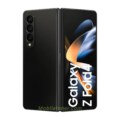
|
Disclaimer Note
We cannot guarantee that the information on this page is entirely 100% accurate.

